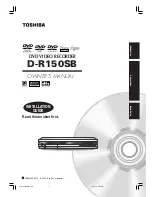
LSI Logic Confidential
Graphics Accelerator
4-9
Copyright © 2001, 2002 by LSI Logic Corporation. All rights reserved.
highly programmable and compatible with a large variety of signal timing
specifications. The ability of the interface to directly access SDRAM
allows for the storage of received sequences and the transmission of
preassembled sequences with minimal processor support.
Note:
The IR Blaster transmit ports are not available when the
external host port is configured in Host-plus-Limited-Master
or mode.
The IDC (inter-device communication) interface allows background
communication to occur between the various components in the system.
The IDC bus is a simple, two-wire, bidirectional communication bus. The
two signals, clock and data, are common to every device connected to
the bus.
4.4.8
JTAG Interface (Test Access Port)
The Joint Test Action Group (JTAG) interface includes a 5-pin port as
outlined in IEEE standard 1149.1. The JTAG interface provides for
boundary scan testing utilizing a multiplexor and latches on every pin of
the DMN-8600 device that can be forced to a known state. The actual
data that is latched depends on multiplexor functions controlled by the
TAP (test access port) controller. The TAP can capture pin data based
on test signals from outside the DMN-8600, or can capture normal
activity on the pin.
4.5
Graphics Accelerator
The DMN-8600 integrates a 2D graphics engine on the dual SPARC
processors. This graphics engine is capable of supporting OSD, 2D
graphical user interfaces, and 32-bit RGBA with an 8-bit alpha blending
channel, flicker filters and a high-quality video scaler. It is capable of
supporting multiple video inputs, windowed video and graphics with
arbitrarily relocatable and resizable windows, PiP (Picture-in-Picture),
letterbox, and side-by-side display of SD sources.
















































